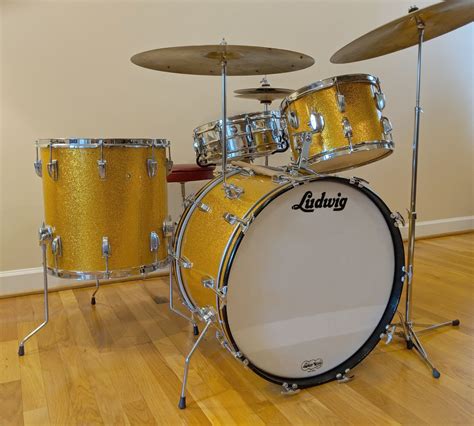The Truth About Vintage Drum Prices: More Than Just a Pretty Face
The world of vintage drums is a fascinating blend of history, craftsmanship, and often, surprisingly high prices. While some vintage kits fetch eye-watering sums, others remain relatively affordable. Understanding the factors that influence pricing is crucial whether you're a seasoned collector, a budding enthusiast, or simply curious about the market. This article delves into the truth behind vintage drum prices, exploring the key elements that determine value and helping you navigate this exciting, but sometimes confusing, landscape.
What Makes a Vintage Drum Kit Valuable?
Several factors contribute to the value of a vintage drum set, extending far beyond mere age. A drum's worth is a complex equation involving:
-
Brand and Model: Certain brands, like Ludwig, Slingerland, and Gretsch, have a long-standing reputation for quality and innovation, commanding premium prices. Specific models, particularly those associated with famous drummers or musical periods, also see significantly higher values. A 1960s Ludwig Classic kit, for example, will generally sell for much more than a comparable kit from a lesser-known manufacturer.
-
Condition: This is perhaps the single most important factor. A beautifully preserved, nearly mint-condition kit will be worth considerably more than one showing significant wear and tear. Scratches, dents, missing parts, and damaged finishes all detract from a drum's value. Original hardware and finishes are highly prized.
-
Rarity: The rarer the drum or kit, the higher the price. Limited edition models, prototypes, or drums with unique features are highly sought after by collectors. Kits used by famous musicians can command astronomical prices.
-
Sound and Playability: While condition plays a crucial role, the actual sound and playability of the drums are also considered. A well-maintained kit with a desirable tone will attract higher bids than one that sounds dull or has issues with tuning.
-
Completeness: A complete kit with all the original drums, hardware, and cases is significantly more valuable than a partial kit or one missing essential components.
Why Are Some Vintage Drums So Expensive?
The high price tags on some vintage drums are due to a combination of factors:
-
Limited Supply: Many of these drums were produced decades ago, and their numbers are dwindling due to age and wear. This limited supply fuels demand.
-
Increased Demand: The popularity of vintage drums has grown steadily over the years, with both professional musicians and collectors driving up prices.
-
Nostalgia and Collectibility: For many buyers, owning a vintage drum kit is more than just acquiring musical equipment; it's about owning a piece of history and connecting with a specific era of music. This adds significant value beyond the practical use of the drums.
-
Investment Potential: Some see vintage drums as an investment, believing their value will continue to appreciate over time, much like other collectibles.
How to Determine the Value of a Vintage Drum Kit?
Determining the accurate value of a vintage drum kit requires careful research and consideration of the factors outlined above. Here are some helpful steps:
-
Research Online: Explore online marketplaces like Reverb, eBay, and dedicated vintage drum forums to see what similar kits are selling for.
-
Consult with Experts: Connect with experienced drum appraisers or vintage drum dealers for professional valuations.
-
Check Serial Numbers: Often, serial numbers can help you determine the age and specific model of the drums, contributing significantly to accurate valuation.
H2: Are All Vintage Drums a Good Investment?
Not necessarily. While some vintage drums appreciate in value, others may not. Several factors influence whether a specific drum or kit is a good investment, including its condition, rarity, and current market demand. Thorough research and careful consideration are essential before making any significant financial commitment.
H3: Where Can I Find Vintage Drums?
You can find vintage drums in various places:
-
Online Marketplaces: Websites like Reverb and eBay offer a wide selection of vintage drums.
-
Music Stores: Some music stores specialize in vintage instruments and may have a selection of vintage drums available.
-
Pawn Shops: Occasionally, you might find vintage drums in pawn shops, although the condition and pricing may vary.
-
Private Sellers: Connecting with private sellers directly can sometimes lead to discovering hidden gems, but caution and thorough research are essential.
H3: What's the Difference Between Vintage and Antique Drums?
The distinction between "vintage" and "antique" drums is somewhat subjective but generally, "vintage" refers to drums from the mid-20th century (roughly 1930s-1980s) that are still relatively common. "Antique" usually implies drums considerably older, often with greater historical significance and usually higher value.
Conclusion
The world of vintage drums is a vibrant and dynamic market with prices determined by a complex interplay of factors. Careful research, expert advice, and a keen eye for detail are essential for both buyers and sellers. While some kits command impressive prices, others remain accessible to enthusiastic musicians on a budget. The key lies in understanding the specific characteristics that contribute to a drum's value and making informed decisions.

